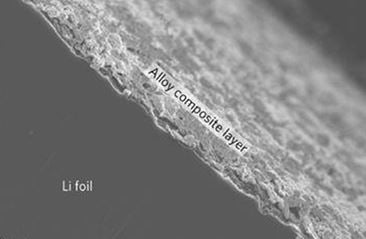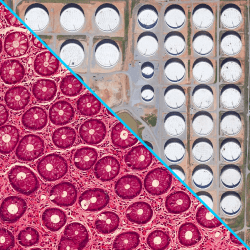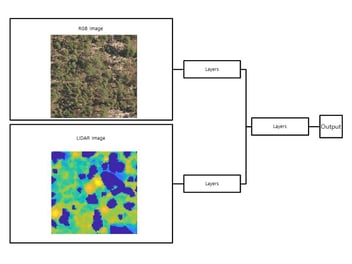Innovate Battery Production with Microscopy Image Analysis

Learn how microscopy image analysis is transforming the way batteries are manufactured, leading to improved efficiency and performance.
The Role of Microscopy in Battery Production
Microscopy plays a crucial role in battery production, allowing manufacturers to analyze and understand the microscopic structures and components of batteries. By using powerful microscopes, researchers and engineers can examine the materials, interfaces, and defects within batteries, providing valuable insights into their performance and functionality.
With microscopy, it becomes possible to visualize and study the electrode materials, electrolytes, and separators used in batteries. This enables manufacturers to identify any impurities, defects, or inconsistencies that may affect the battery's performance or safety. By understanding the microscopic details, manufacturers can optimize the manufacturing processes and improve the overall quality of batteries.
Furthermore, microscopy techniques like scanning electron microscopy (SEM) and transmission electron microscopy (TEM) allow for high-resolution imaging of battery materials at the nanoscale. This level of detail helps researchers study the morphology, crystal structure, and composition of battery materials, leading to the development of new and improved battery technologies.
In summary, microscopy plays a crucial role in battery production by providing detailed insights into the microscopic structures and components of batteries. It enables manufacturers to optimize manufacturing processes, improve battery quality, and develop innovative battery technologies.
Benefits of Microscopy Image Analysis in Battery Manufacturing
Microscopy image analysis offers several benefits in battery manufacturing.
Firstly, it allows for the detection and characterization of defects or impurities in battery materials. By identifying and understanding these issues, manufacturers can implement corrective measures to enhance battery performance and safety.
Secondly, microscopy image analysis enables the quantitative analysis of battery materials. It provides precise measurements of particle size, distribution, and morphology, which are crucial for optimizing electrode materials and improving battery performance.
Additionally, microscopy image analysis helps in the study of battery degradation mechanisms. By monitoring the changes in battery materials over time, researchers can identify the causes of performance degradation and develop strategies to mitigate it. This leads to the development of longer-lasting and more reliable batteries.
Furthermore, the study of battery degradation is crucial in identifying and understanding the causes of battery short circuits, which have become a pressing issue in recent times due to the risk of battery fires and explosions. As batteries age, the likelihood of a short circuit occurring increases, making microscopic studies essential for comprehending these mechanisms.
However, conducting microscopic image research presents significant challenges for researchers in the fields of materials science, natural sciences, and electrical engineering. Dealing with ultra-high-resolution images like SEM micrographs poses considerable obstacles, as these images are large and time-consuming to analyze.
To address this issue, there is a need for specialized machine learning software solutions and technologies that can automate the analysis of high-resolution images. The problem lies in the fact that researchers in these fields often lack expertise in computer vision and large file processing.
Lastly, microscopy image analysis contributes to the development of advanced battery technologies. By studying the microstructure and composition of battery materials, researchers can design and engineer new materials with improved properties, such as higher energy density and faster charging capabilities.
In conclusion, microscopy image analysis offers multiple benefits in battery manufacturing, including defect detection, quantitative analysis, degradation study, and the development of advanced battery technologies.
Enhancing Battery Performance through Microscopy Image Analysis
Microscopy image analysis plays a crucial role in enhancing battery performance. By studying the microstructure and composition of battery materials, researchers can identify factors that affect battery performance and make necessary improvements.
One aspect where microscopy image analysis contributes is in optimizing electrode materials. By analyzing the morphology and distribution of active materials, researchers can improve the electrode's contact area, maximize the utilization of active materials, and enhance the electrochemical performance of the battery.
Moreover, microscopy image analysis helps in understanding and improving the interfaces within batteries. By studying the interfaces between electrode materials, electrolytes, and separators, researchers can identify and address issues such as poor conductivity, unwanted reactions, and degradation. This leads to improved battery performance, stability, and lifespan.
Furthermore, microscopy image analysis allows for the study of battery failure mechanisms. By analyzing the microscopic changes and degradation patterns in battery materials, researchers can identify failure modes and develop strategies to prevent or mitigate them. This leads to the development of more reliable and safer batteries.
In summary, microscopy image analysis plays a vital role in enhancing battery performance by optimizing electrode materials, improving interfaces, and understanding failure mechanisms.
Improving Battery Manufacturing Processes with Microscopy Image Analysis
Microscopy image analysis is instrumental in improving battery manufacturing processes. By analyzing the microscopic details of battery materials and components, manufacturers can identify areas for process optimization and quality control.
One aspect where microscopy image analysis contributes is in ensuring the uniformity and consistency of battery materials. By analyzing the particle size, distribution, and morphology of electrode materials, manufacturers can adjust the manufacturing processes to achieve desired characteristics and minimize variations.
Additionally, microscopy image analysis helps in detecting and characterizing defects or impurities in battery materials. By implementing quality control measures based on microscopy image analysis, manufacturers can ensure that only high-quality materials are used in battery production, resulting in improved battery performance and reliability.
Moreover, high speed microscopy image analysis enables high-speed monitoring of battery manufacturing processes. By integrating microscopy techniques into production lines, manufacturers can analyze the microscopic details of battery materials during various stages of production, allowing for immediate feedback and adjustments. This ensures consistent quality and reduces the risk of defects.
In conclusion, microscopy image analysis plays a crucial role in improving battery manufacturing processes by ensuring material uniformity, detecting defects, and enabling real-time monitoring.
Future Applications of Microscopy Image Analysis in Battery Production
Microscopy image analysis holds great potential for future applications in battery production. As battery technologies continue to evolve, microscopy techniques will play an increasingly important role in understanding and optimizing new materials and designs.
Furthermore, microscopy image analysis can contribute to the development of next-generation electrode materials. By studying the microstructure and composition of new materials, researchers can design electrodes with enhanced properties, such as higher energy density, faster charge-discharge rates, and improved stability.
Additionally, microscopy image analysis can aid in the development of advanced battery manufacturing processes. By analyzing the microscopic details of battery materials during different manufacturing stages, manufacturers can optimize process parameters, improve yield, and reduce production costs.
In conclusion, the future applications of microscopy image analysis in battery production are vast, including the study of solid-state batteries, development of next-generation electrode materials, and optimization of battery manufacturing processes.






